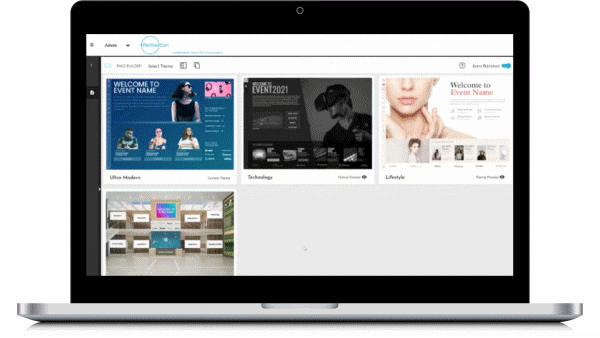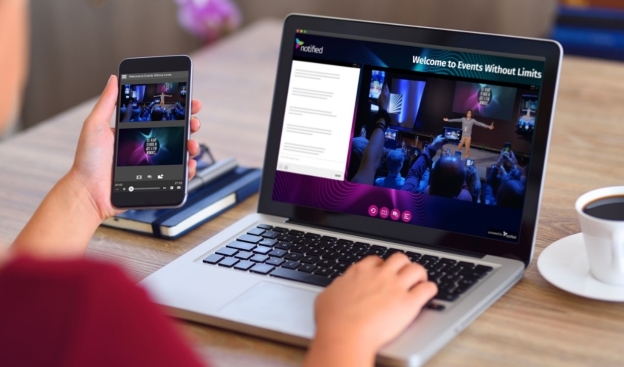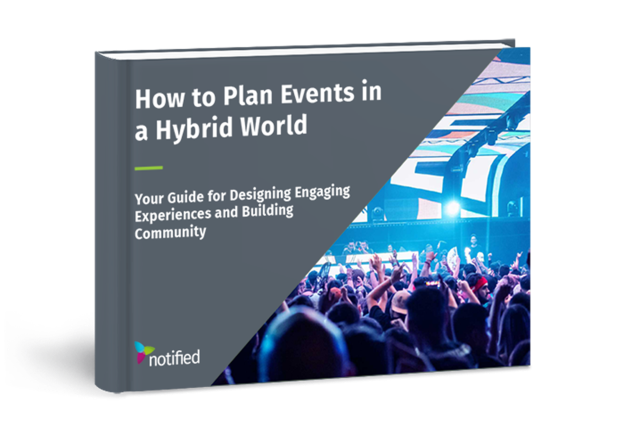There is no doubt the world of events has changed significantly in recent years, with many organizations now planning hybrid events rather than choosing between only digital or only in-person. Hybrid events offer more flexibility and more tools that can increase engagement and build your brand.
Whether you’re an event planner, marketer, internal communications specialist, or a public relations pro, you can follow these steps to learn how to design an engaging and immersive hybrid event.
1. Define Your Event Strategy
There is no one-size-fits-all strategy for planning events. Each event is unique in its goals and objectives, available resources, audiences, and opportunities for engagement and networking. Your event strategy should be based on your business goals and the needs of your community to ensure that you create an experience that is uniquely yours and aligned with your brand and your mission.
The first step is defining what hybrid means to you. A hybrid environment can provide you with targeted:
-
Theme/branding
-
Storytelling
-
In-person creative content
-
Digital creative content
Once you have defined what hybrid means in the context of your event, it’s time to explore how the new event life cycle can make your experience available to your community pre-event, during the event, and post event. This life cycle offers an event portfolio that includes everything from small local get-togethers, to intimate virtual sessions, to large-scale trade shows.
2. Pre-Event: Designing Your Event Experience

When designing your unique event experience, be sure to include input from key audiences to ensure that you are offering content and experiences that align with their needs. You can use this time and these interactions to build anticipation within your community. Ask your community what/who they would like to see at the event so that they feel included in the planning. Conduct speaker interviews to find out what current issues they would like to address and poll your community audience to assess relevance.
Identify your business goals and objectives and consider how to integrate the input you have received from your community. Objective-setting narrows your focus so that you can determine what kinds of experiences you should create for your community as well as specific segments of that community.
Monetization and Sponsorships
Sponsors represent a unique segment of event participants and, much like your other guests, you must strive to understand their needs and develop packages accordingly. Develop sponsorship opportunities unique to the in-person and digital channels. At the same time, find creative ways for sponsorships to cross over from one channel to the other, creating integrated sponsorship opportunities.
Audience Acquisition
Next, you will want to build a schedule of pre-event promotions including email campaigns, social posts and pushes, blog posts, press releases, paid search, and paid media/industry partnerships. Include in your strategy ways to engage your audience and create buzz for your program. Their enthusiasm can be a very powerful marketing tool.
3. Live Event: Content and Planning

Asking your audience for their input to help guide the content and programming for your event creates a high likelihood for success. You can gather these insights through online polls, surveys, focus groups and calls with key constituents.
While it is a strategically sound decision to create exclusive experiences for digital and in-person members of your audience community, it is important to remember that you have only one audience. Your job is to build that connective tissue that creates a seamless experience across touchpoints for different audience segments to engage with one another.
Consider using these engagement opportunities to build those connections:
-
Attendee-to-attendee matchmaking
-
1:1 video chat
-
Brainstorming sessions
-
Expert meetings
-
Sponsor meetings
-
Gamification
For exclusively in-person events, planners can intentionally design activities and experiences for greater engagement.
4. Post-Event: Fuel Community Engagement
Keeping your community engaged after your main event is crucial.
Start with letting attendees know where they can find content and how to keep the conversation going. Then, analyze your event engagement data to understand what grabbed your community’s attention and repurpose that content. To help reinforce your content and create community use your data and insights collected to repurpose the content that performed well into a stream of engagement opportunities.
Measure Event Success
Now is the time most planners begin to measure success. Metrics and data help you formulate a view of whether the event met your goals and objectives.
Here are some aspects of your event that might offer measures of success:
-
Registration and login
-
Social mentions
-
Content views
-
Survey responses and metrics
-
CPE, testing, badges and certification metrics
-
Recommendation activity
-
Unique and total attendees within a specific time frame
Start Planning Your Next Event
Hybrid events provide a unique opportunity to take advantage of the benefits of both digital and in-person channels. Your event is more than just a moment in time – it’s part of a process of building community for years to come, and the hybrid model allows us to merge the success from both types of event channels.
Download our complete 2022 Events Guide to get practical tips and practices to help you build engaging and memorable events or schedule a demo and we will see how our solution can help solve your needs.

